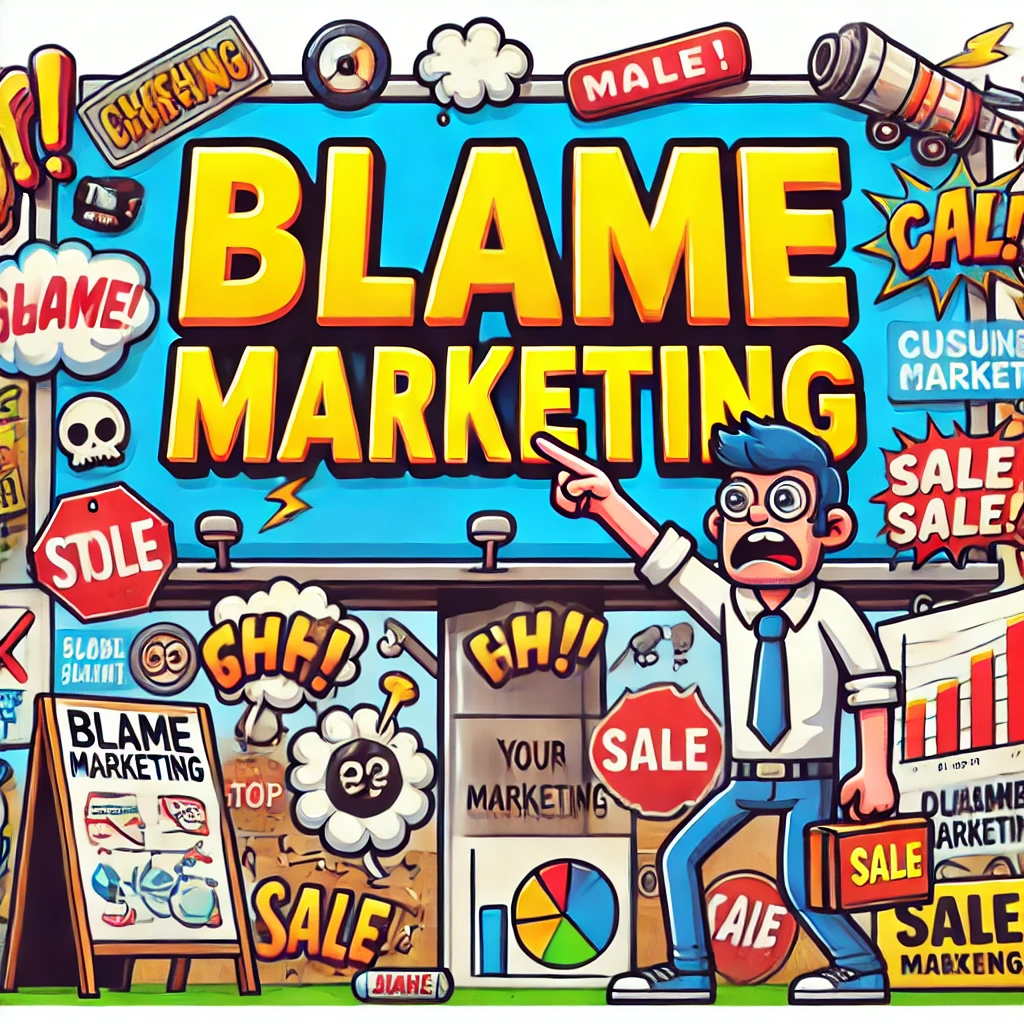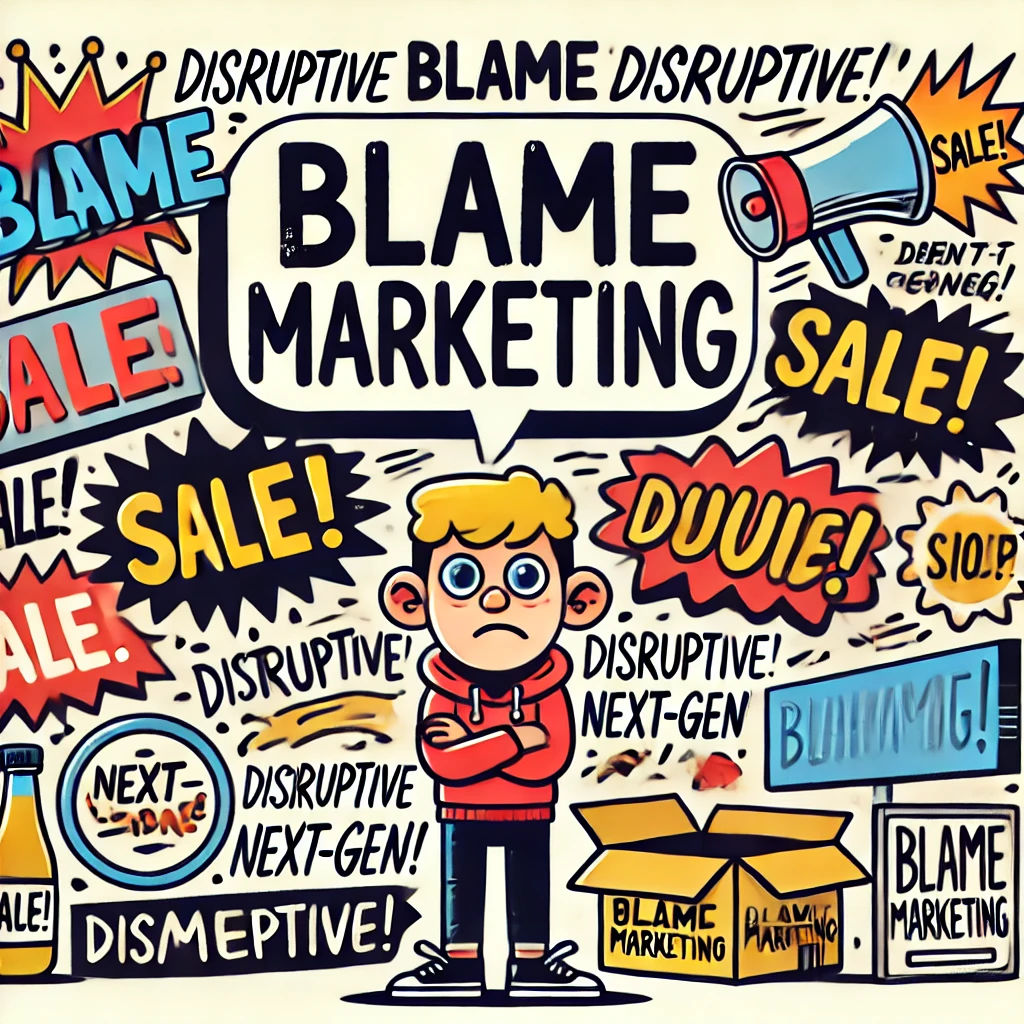This Clinic’s Marketing Strategy Gave Me Flashbacks to Chemo
Back in 2009, we blamed my cancer for everything.
The Phillies losing? Blame my cancer.
Slow Wi-Fi? Cancer’s fault.
Someone forgot their password for the third time that day? You already know.

The #BlameDrewsCancer campaign gave people something to yell at—something to laugh at—while I was battling the very real, very unfunny reality of chemo.
And honestly, it helped.
So I’m doing it again.
But this time, I’m blaming something arguably more preventable: terrible healthcare marketing.
Why Most Healthcare Branding Fails Before It Starts
Ask any clinic why their marketing isn’t working and you’ll hear some variation of: “We just need more reach,” or “We’re running some ads, but they’re not converting.”
Translation: they’re spending money without saying anything anyone wants to hear.
Healthcare branding isn’t about looking polished. It’s about being remembered.
Most clinics copy each other. Same taglines. Same stock photos. Same promises.
But branding isn’t about sameness — it’s about standing out with purpose.
If I can swap out your clinic’s name and nothing changes? That’s not a brand. That’s a placeholder.
What We Did Right: Understanding the Audience
When we launched #BlameDrewsCancer, we weren’t thinking like marketers.
We were thinking like people. People in pain. People who needed to laugh.
People who would rather scream into the internet than cry alone in a waiting room.
And it worked because it connected.
It didn’t ask for donations — it made people want to participate.
It didn’t shout “look at us” — it invited people into something bigger than a brand.
Clinics can do the same, but they rarely do. Why? Because too many are stuck trying to “look professional” instead of trying to be useful, memorable, or honest.
Attention Comes First. Then Trust. Then Patients.
Let’s talk digital PR for healthcare clinics.
You want press coverage, backlinks, traffic?
Here’s the secret: you have to be worth quoting.
We didn’t get featured in national outlets by sending cold emails. We got there because the story was strong enough to travel on its own. Because it was different. Because it didn’t blend in.
Your clinic can’t expect to show up in Google News or get linked in real articles if your content looks like every other clinic blog. You need a voice. A hook. A reason to care.
Stop saying “quality care since 1998.” Start saying something only you could say.

Check How A Tweet Got More Attention Than Your Entire Clinic
Why Clinics Waste Thousands on Lazy Marketing
We’ve seen it a thousand times:
- Boosted Facebook posts with zero targeting
- Meta ads without landing pages
- Google Ads with broad match keywords and no tracking
- Homepages with headlines like “Welcome to Our Website”
This isn’t just poor execution. It’s strategic neglect.
It’s what happens when you skip step one: understanding who you’re talking to and why they should care.
Your patients don’t click because your ads say nothing.
They don’t convert because your brand has no pulse.
And they don’t trust you because you sound like a brochure written by committee.
Exhibit A: A Real Clinic, A Real Budget, A Real Disaster
This clinic had a $5,000/month ad budget and somehow ended up with:
- A single Facebook post featuring a blurry waiting room selfie
- A Google Ads campaign targeting everyone in a 500-mile radius
- No funnel, no tracking, and no idea where their leads were (or weren’t) coming from
It gave me flashbacks. Not to the chemo, but to that foggy, nauseous feeling you get when you realize you might be dying slowly—in this case, from digital malpractice.

The Blame Drew Method: Start With Emotion, Finish With Impac
We made people laugh. We made them think. We made them participate.
And we didn’t need a $20,000 brand refresh to do it.
We told a story.
We owned our voice.
We got personal, and the world paid attention.
That’s healthcare marketing done right.
That’s digital PR without the fluff.
That’s what your clinic can build — if you stop playing it safe.
You’re Not Just Selling Services — You’re Selling Trust
I beat cancer. That was the hard part.
Fixing your marketing? That’s just a matter of making better choices.
Start with your audience. Understand their fears. Speak to their hopes.
Be brave enough to say something real — and loud enough to be heard.
Or don’t. And if the leads never come, if the phones stay silent, if no one remembers your name…
You can always blame me.
We’ve done it before.
And So, We Blame
Not because it fixes things.
But because it helps us see things.
- Blame Drew’s cancer for making me care about attribution.
- Blame the algorithm for not saving you from your own ad strategy.
- Blame whoever told you “boosting a post” is marketing.
But mostly?
Blame the agency that took your money and didn’t even install a Meta Pixel.
What They Could’ve Done:
- Built a real landing page with a tracked CTA
- Segmented audiences instead of casting digital napalm
- Set up proper analytics (GA4, Meta Events, phone tracking, the works)
- Used the budget like it mattered—because it does
I beat cancer.
That was hard.
Fixing your clinic’s marketing? Honestly, not that bad by comparison.